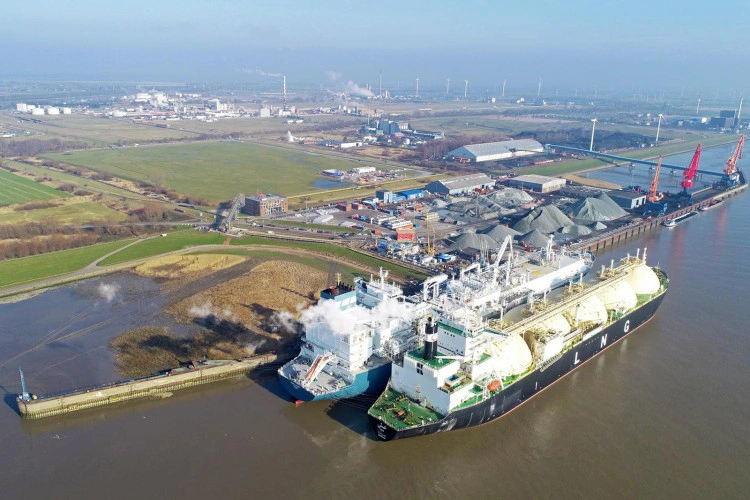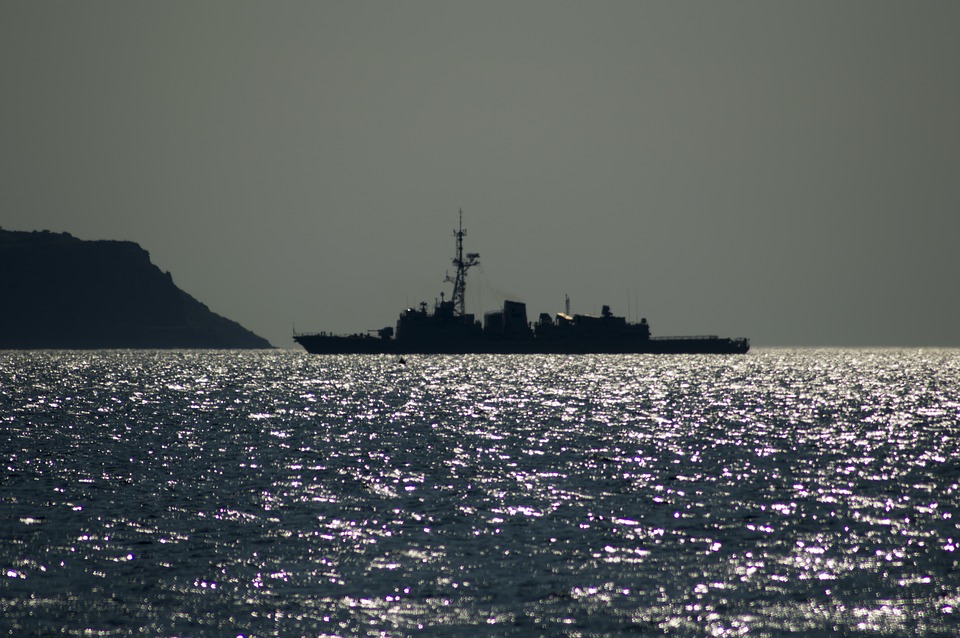
REGENT Craft, an American manufacturer of modern electric vehicles, introduces Monarch Screens for use in Egypt. These vehicles, combining the functions of a ship and an aircraft, offer exceptional efficiency - they move at speeds of up to 290 km/h, consuming less energy than traditional maritime units. The Monarchs will be used for passenger transport between Egypt's main cities and popular tourist resorts. The project supports ecological solutions and is part of the development of maritime transport based on renewable energy sources.
Visualization – REGENT Craft.
The port of Chancay, the first of its kind in South America, was built by the Chinese company COSCO Shipping. Located on the Pacific coast, the port is of strategic importance to the Maritime Silk Road, connecting the markets of Asia and the Americas. The investment worth USD 3.6 billion includes advanced transhipment infrastructure and container terminals. The Chinese authorities emphasize that the project will contribute to increasing international trade and strengthening economic cooperation.
Photo Depositphotos


Germany, as part of its strategy to become independent from raw materials from Russia, has banned the operation of ships transporting Russian liquefied natural gas (LNG). This decision is a response to Russia's military operations in Ukraine and is intended to limit Russia's economic influence in Europe. In the longer term, Germany plans to invest in the development of LNG terminals and import of gas from alternative directions, including the United States and Qatar.
Photo RWE
Russia is increasing the presence of its warships near Western Europe. Portuguese maritime authorities are reporting increased movement of military vessels, including frigates, corvettes and reconnaissance vessels. Experts indicate that these actions may be an attempt to intimidate NATO countries or a demonstration of force in international waters. The situation raises concerns about the security of the region and is being monitored by local and international armed forces.
Photo PortalMorski.pl


The Svanen crane vessel, known for building the foundations of wind farms, arrived in Gdynia as part of preparations for the construction of the first Polish offshore wind farm. The unit was modernized to meet the requirements of offshore projects in the Baltic Sea region. The Baltic Power farm, which is a joint venture of Orlen and Northland Power, will contribute to increasing the share of renewable energy sources in Poland.
Photo GospodarkaMorska.pl
Monopoles for the Baltic Power wind farm, located 23 km off the coast of Poland, were manufactured and shipped from Germany. A farm with a capacity of 1.2 GW will provide energy for one million households. The company announced that a total of 26 transports will be made to the transhipment port, from where the elements will be delivered to the construction site in early 2025. A total of 78 monopiles will be installed on the wind farm, 76 for wind turbines and 2 for offshore power stations. The project is an important step in the development of the Polish renewable energy sector, reducing CO2 emissions by 2.8 million tons per year. The investment supports the country's energy transformation. The Baltic Power offshore wind farm with a capacity of approx. 1.2 GW, planned to be built in the Baltic Sea, and scheduled for completion and launch in 2026, is a joint venture of Orlen and the Canadian company Northland Power.
Photo Steelwind Nordenham


The construction of a new T5 terminal has started in the port of Gdańsk. The investment, valued at over EUR 450 million, includes two deep-water quays with a total length of 717 m and assembly yards dedicated to offshore wind farm installations. Baltic Hub has already signed an agreement for its use with PGE Baltica, which is one of the developers of farms in the Polish economic zone on the Baltic Sea. T5 will be created by developing an area of 21 hectares. The terminal is to be completed in 2026 and will become a key element of port infrastructure in Poland.
Visualization – Ministry of Infrastructure
The Swedish concern Saab presented the Autonomous Ocean Core system, which enables full operational autonomy of ships. The solution supports activities such as navigation in difficult conditions, threat detection and electronic warfare. The system was designed to increase the efficiency and safety of maritime operations in the face of growing geopolitical challenges.
Photo Saab


The Northern Port, launched in 1974, became one of the most important infrastructure investments in Poland. Currently, the port serves the largest commercial vessels and is one of the leaders in the Baltic Sea region in terms of transhipment of goods. The 50th anniversary is an opportunity to emphasize its role in the development of the maritime economy and global trade.
Photo PGA press materials